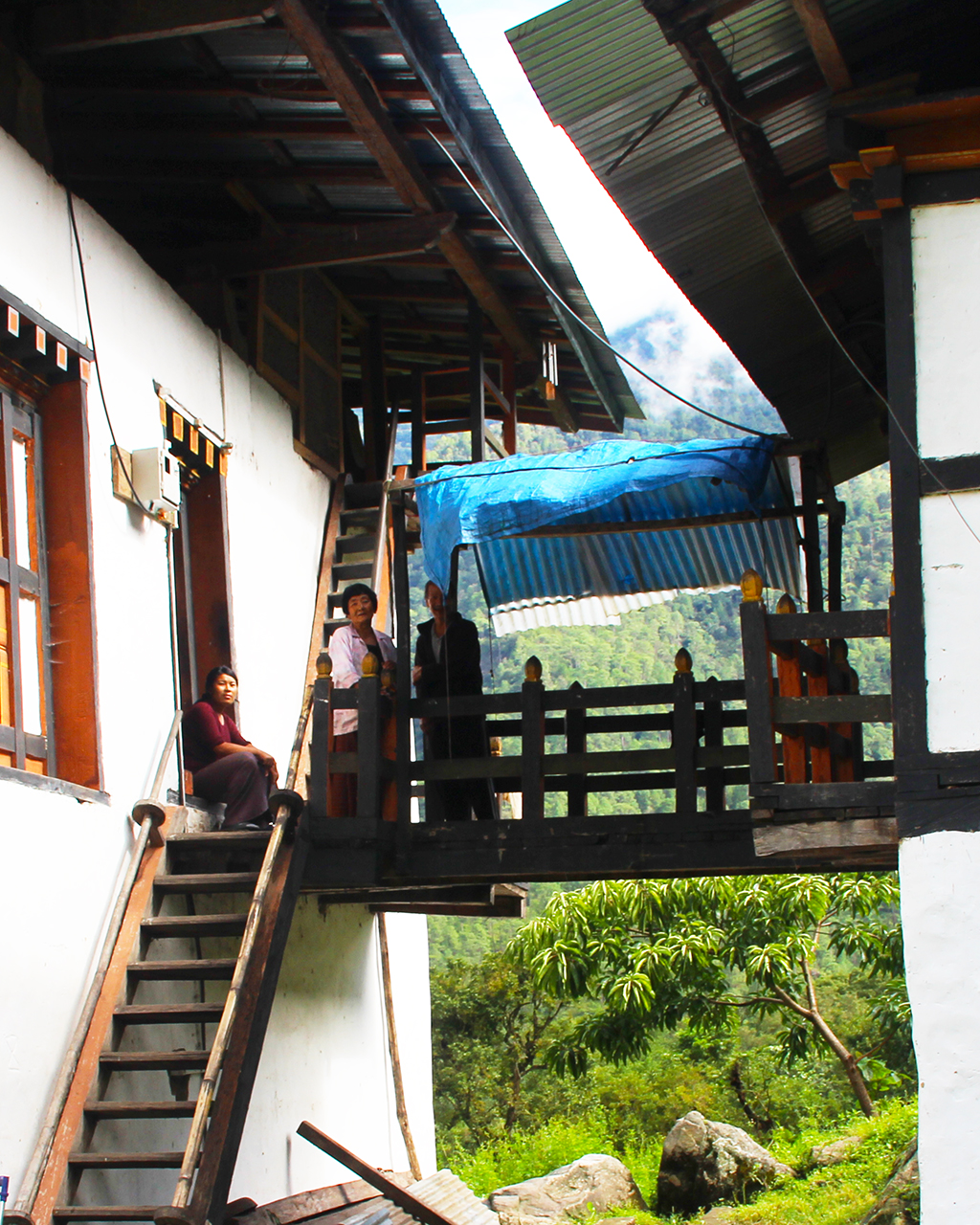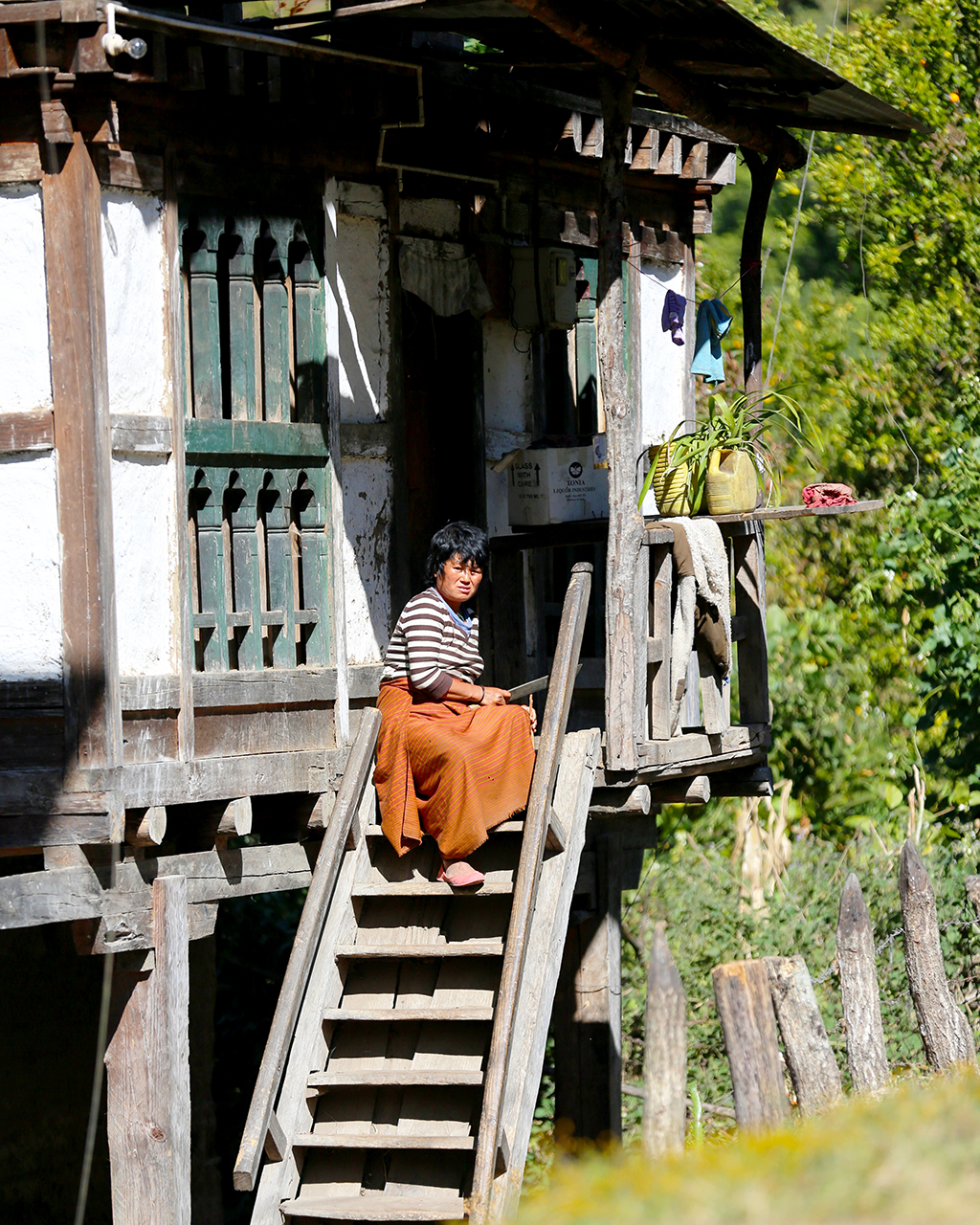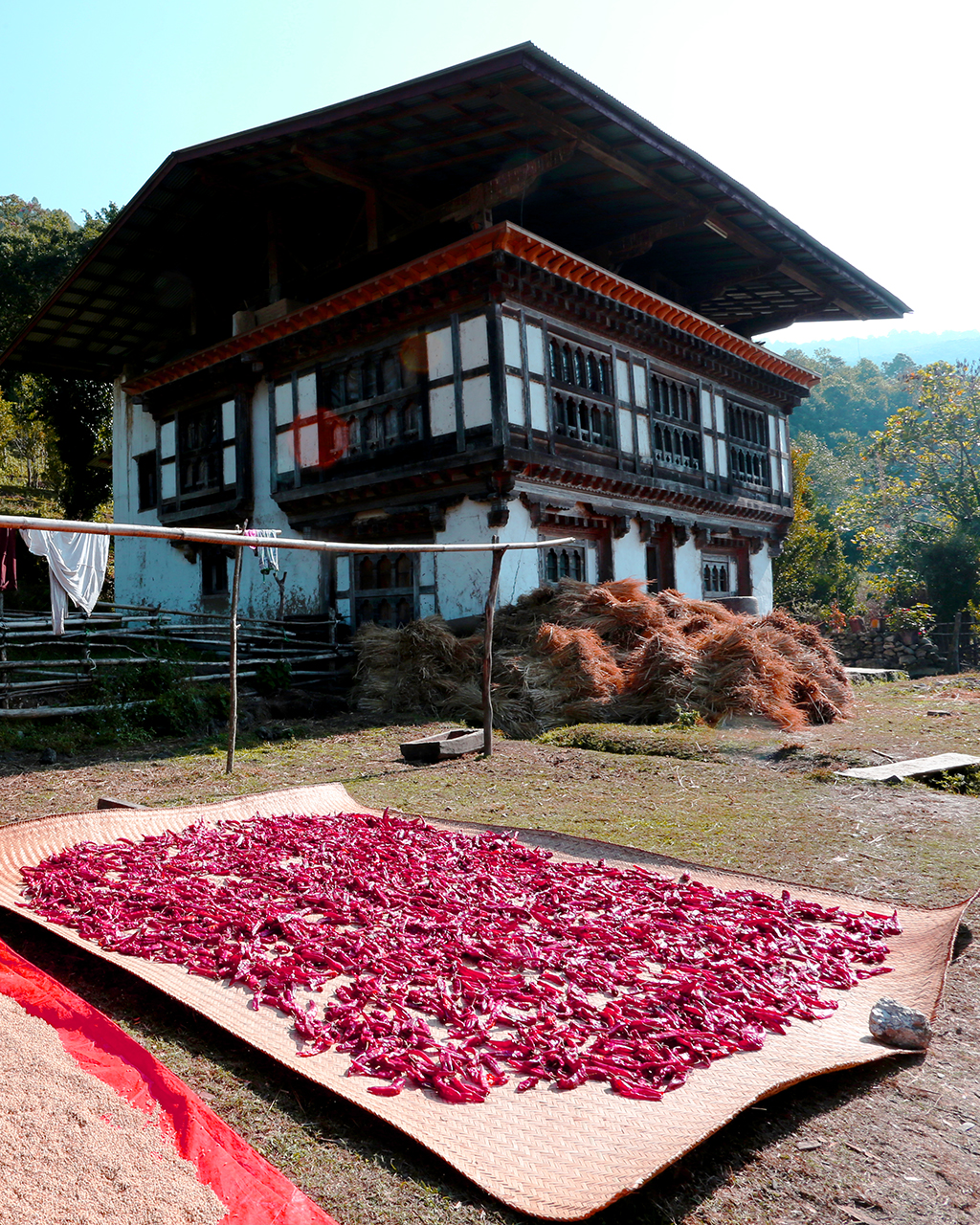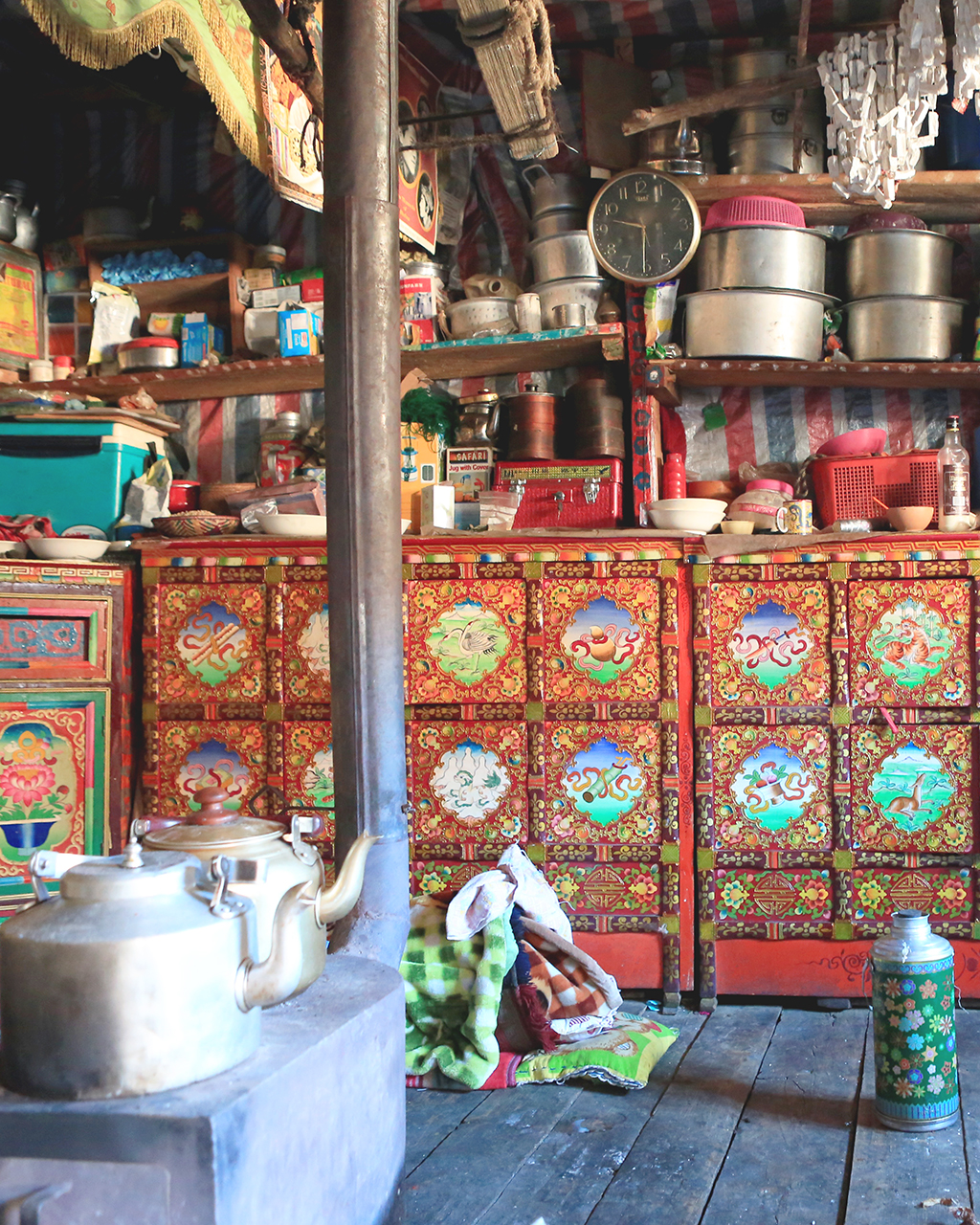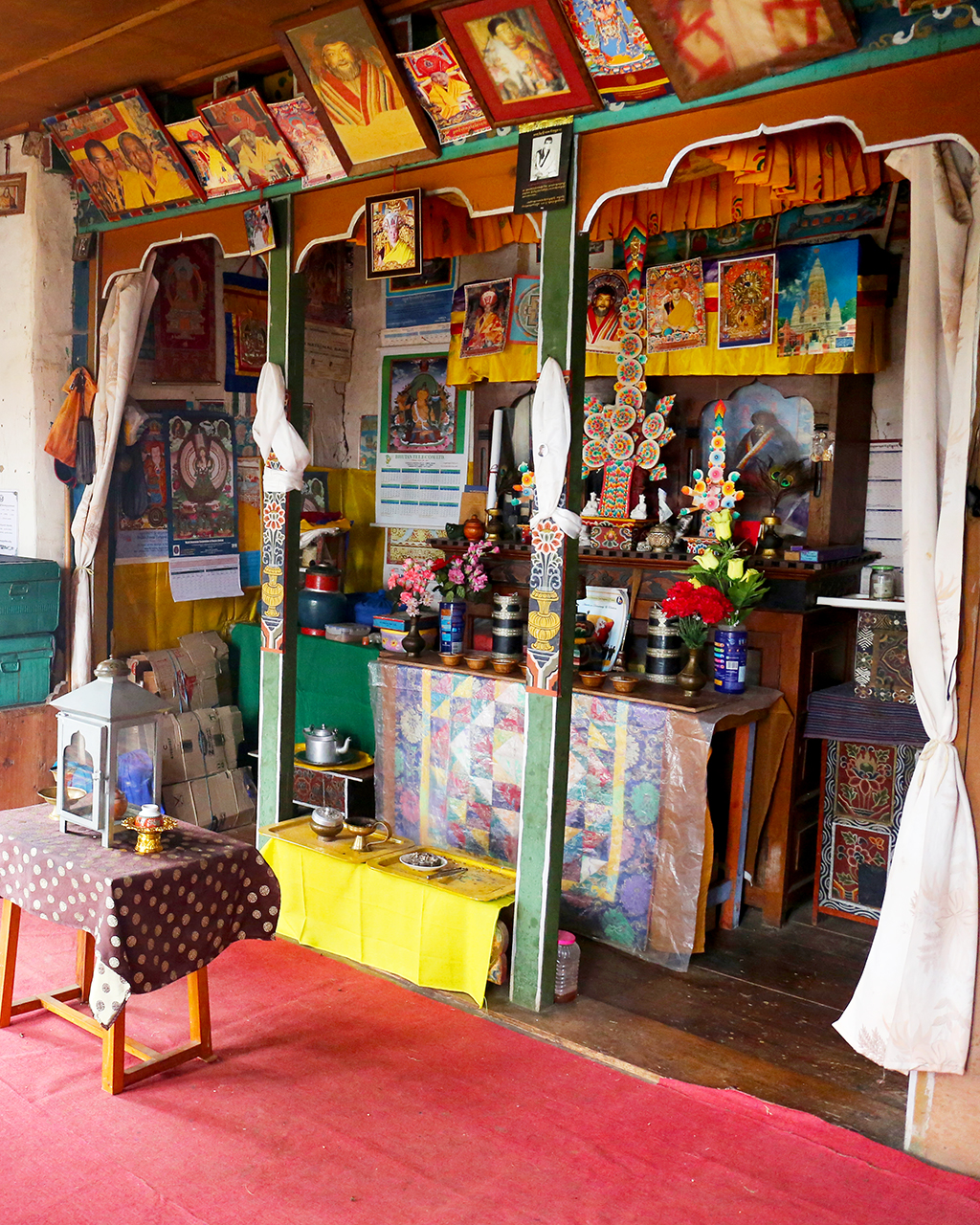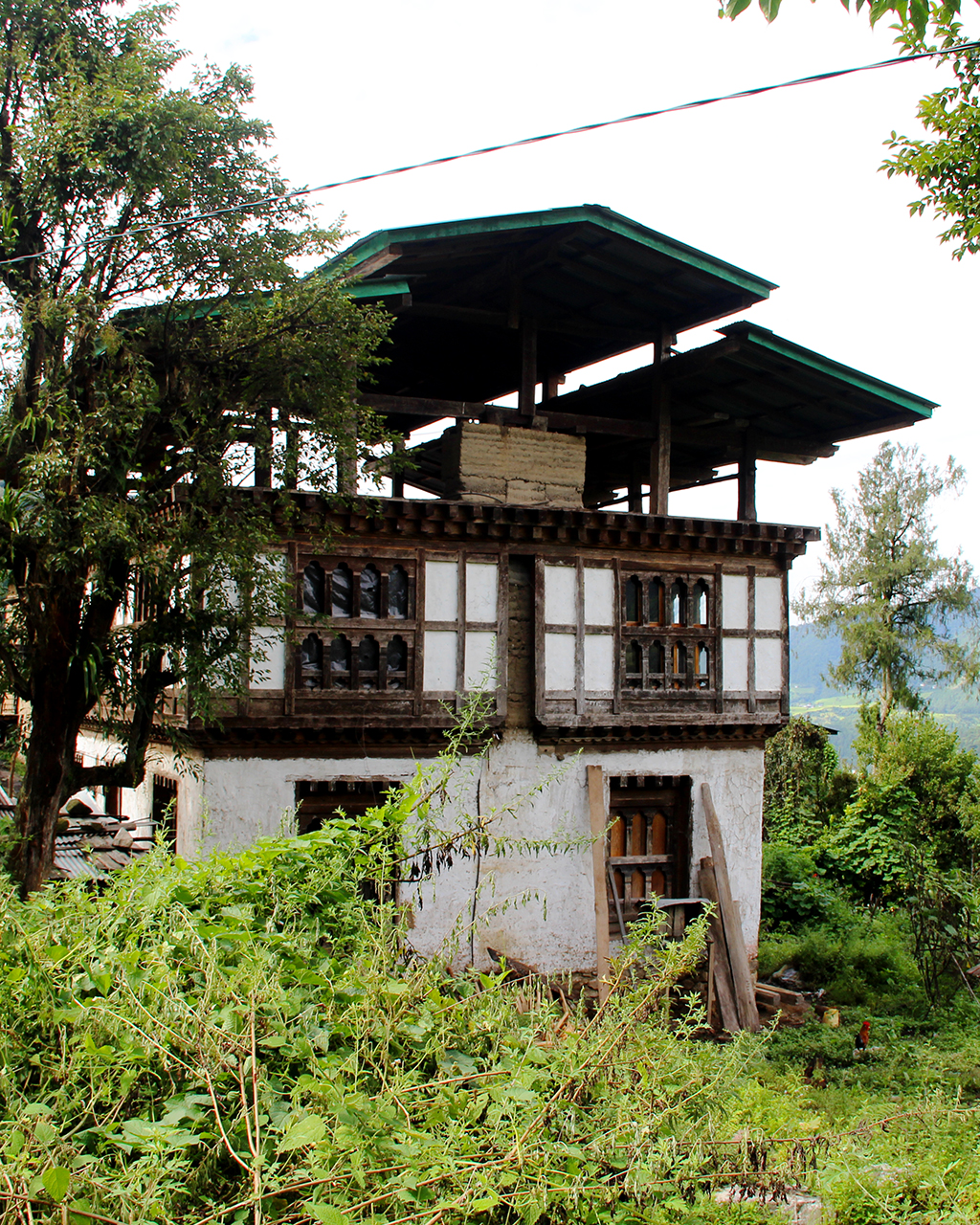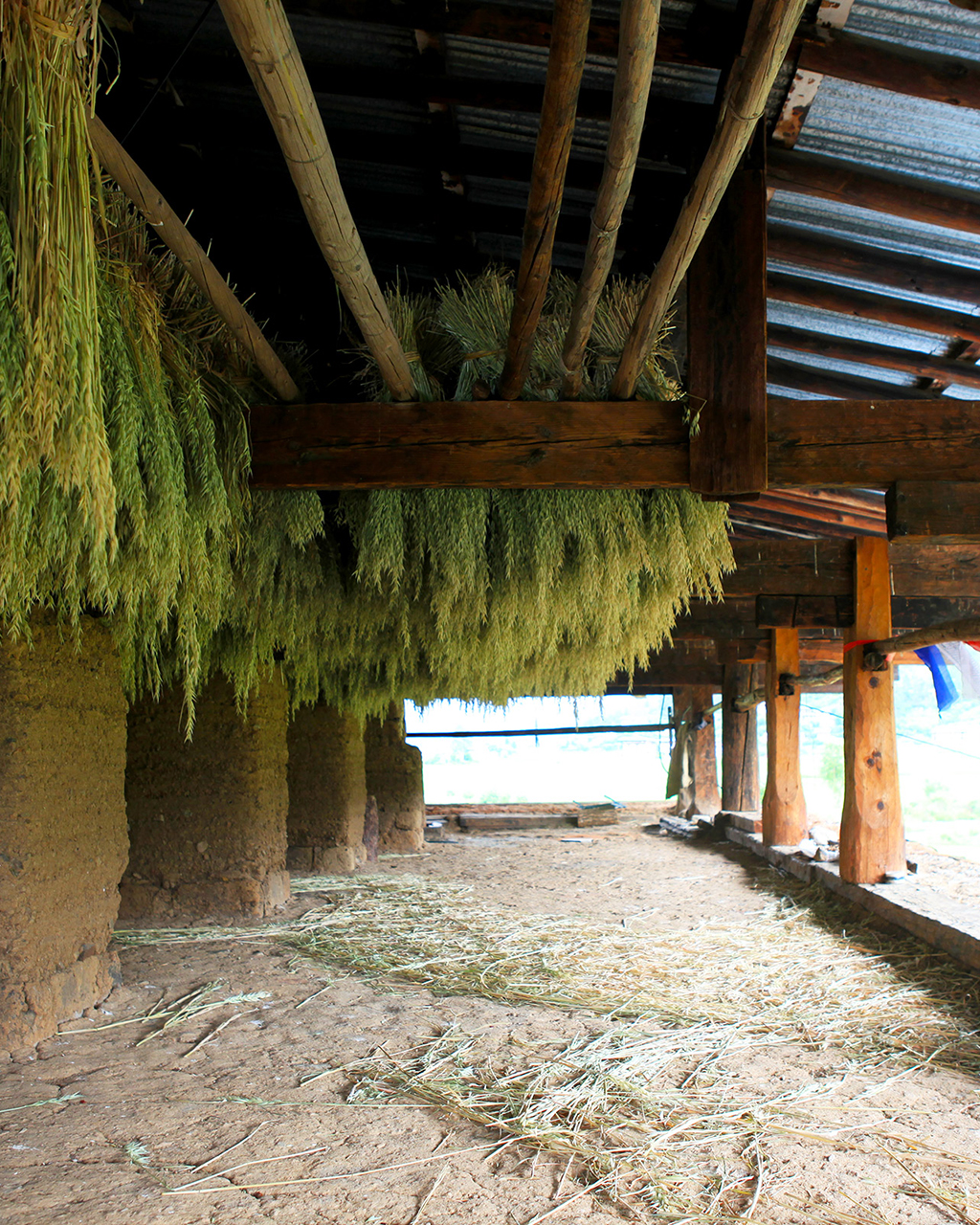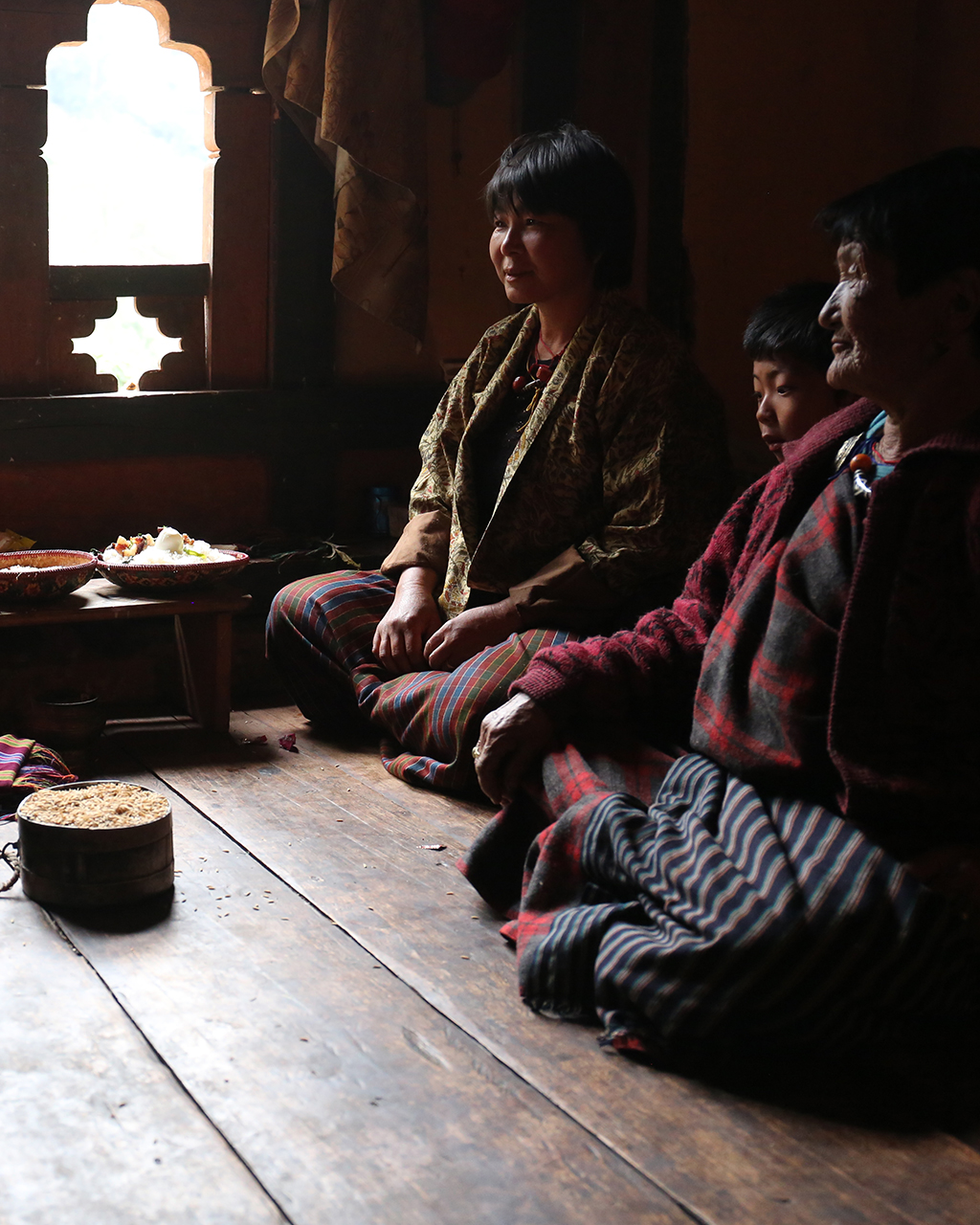The Shape of a Home
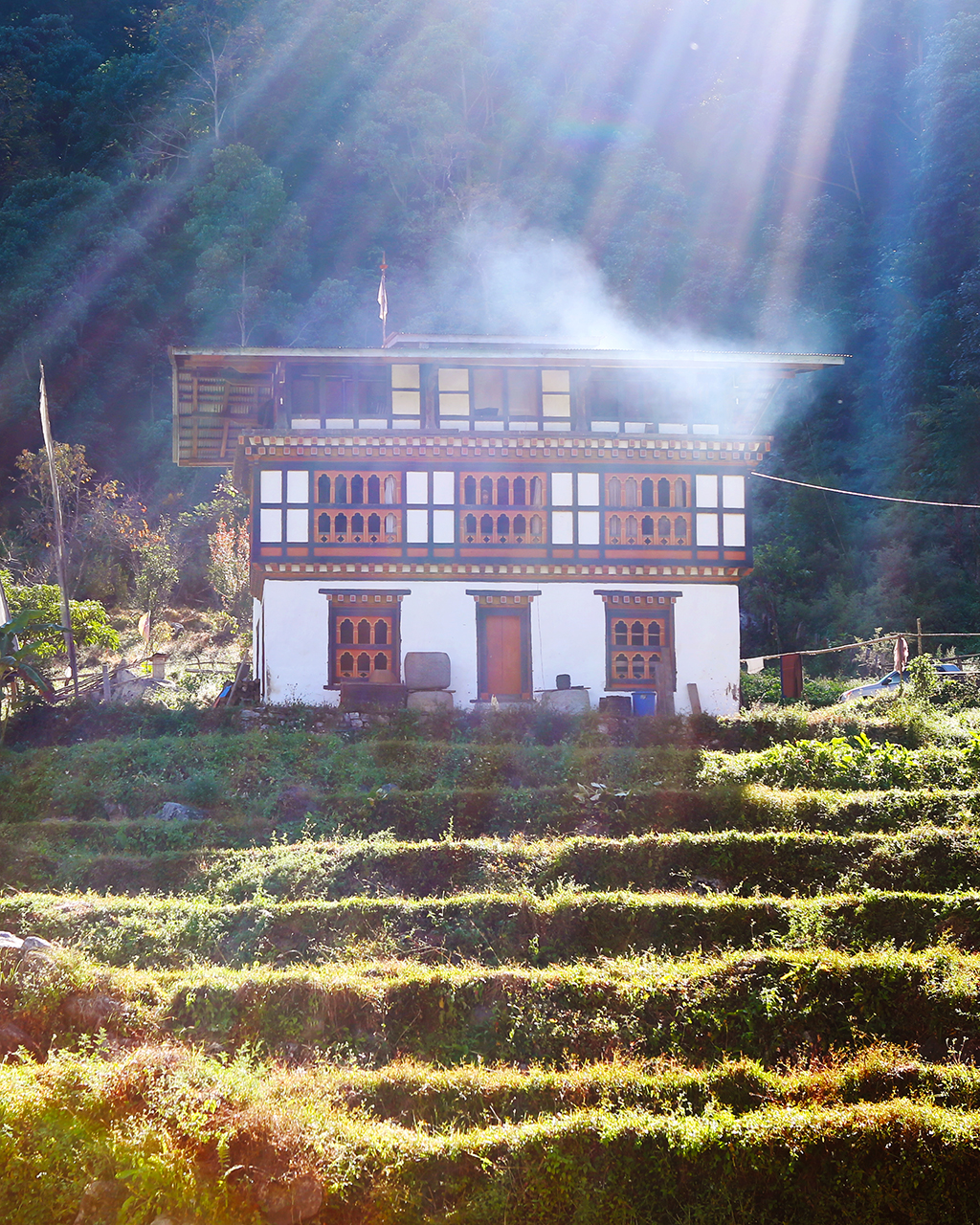
As he looks back on his early childhood, Ugyen recalls his home feeling small and crowded and filled with family – his five brothers and two sisters, and a few uncles as occasional visitors. As was typical, the four room house was built on two levels – the lower level in stone and mud dedicated to livestock, and the upper level in ekraEkra is a kind of a wattle and daub walling system which is traditionally built with mud plaster over a bamboo mat inserted between timber frames – also known as Shamig in Bhutan. The Timber frames in this technique are known as Shoma. https://youtu.be/hgt9dcEUr9s work where the family lived. The pigs were housed indoors while the cows were tied up outside, harnessed to hooks embedded in the walls. Part of the lower floor was also used for grain, dry meat and dry vegetable storage.
The wide deck on the upper level at the entry of the home is Ugyen’s fondest memory, where he remembered life truly being lived. A modest open space with wooden planks and a railing, it was the centre of activity in the day. He recounts memories of his mother working on the deck – drying produce, making cheese, eating domaLike elsewhere in South Asia, chewing doma pani (བདོག་མ་པ་ནི་) is popular throughout Bhutan. Also referred to simply as doma (བདོག་མ་), the collation consists of a quarter or more of the areca nut (Areca catechu; doma), betel leaves (pani or paan) as it is known in South Asia, and a dab of slaked lime (tsuni, derived from chunain Hindi). https://texts.shanti.virginia.edu/book_pubreader/40706…, of him playing with his siblings and being shooed away by the adults, of his father sharing a chaangChhaang or chang is a Nepalese and Tibetan alcoholic beverage also popular in parts of the eastern Himalayas. with a visitor in the evening, and of the dogs sleeping lazily in the sun.
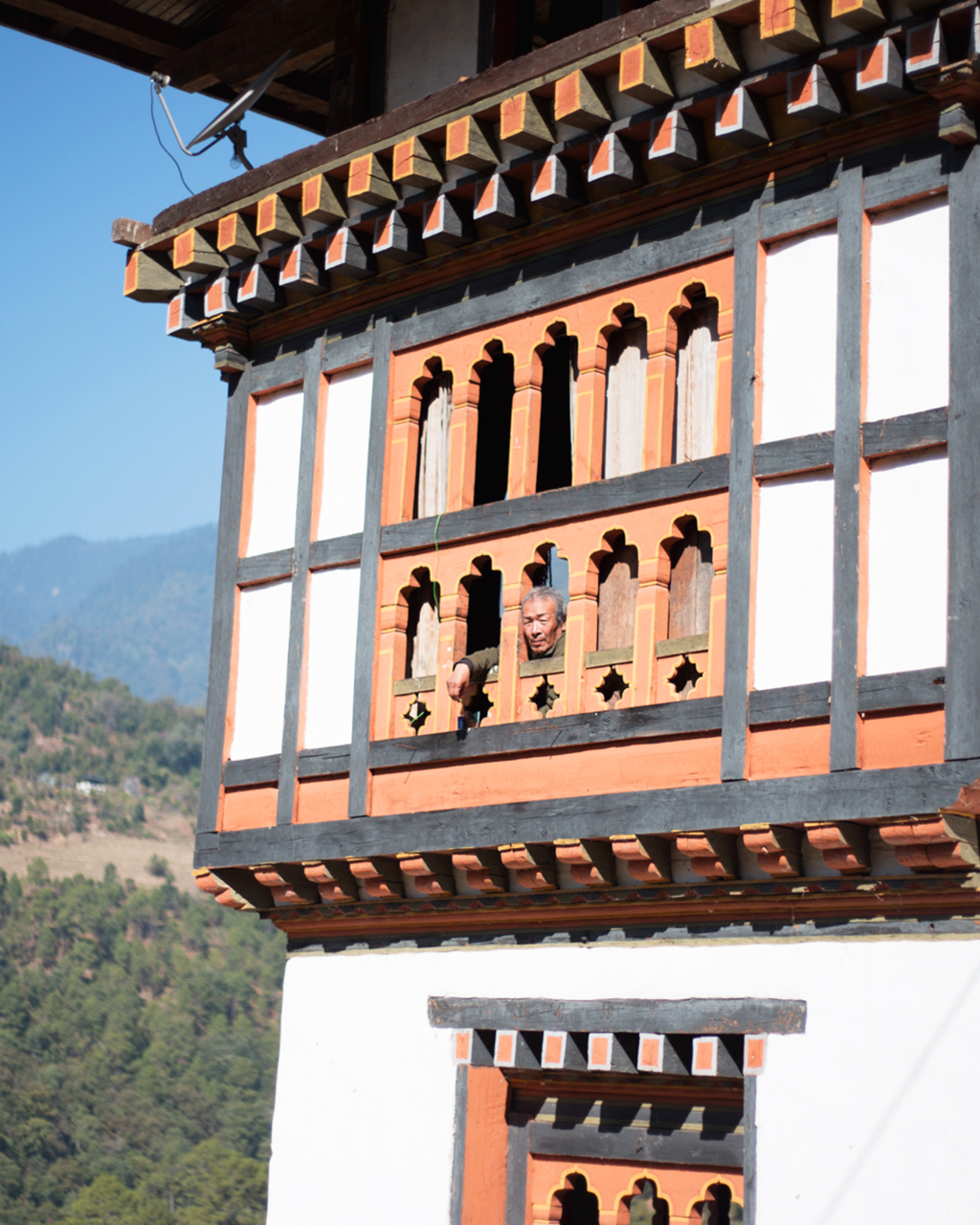
The form of the typical village house has undergone minor changes over the years. In the early 90s, many homes were rebuilt following a decree from the government. Concerns about the health and fire hazards around an internal wood burning stove led to an advisory to move the kitchen outside the home, and the populace complied. Families remodeled their homes to include an external kitchen which was usually accessed through a bridge, and many families also constructed a toilet structure connected to the building as an alternative to their outhouses.
Not much changed in the routine of Ugyen’s house when it was rebuilt. A similar and slightly larger four-room plan was followed, with the external kitchen and a toilet connected to the main house through a bridge. The kitchen was the centre of the home, particularly in wintertime. The whole family gathered around the warm hearth, especially once it was dark.
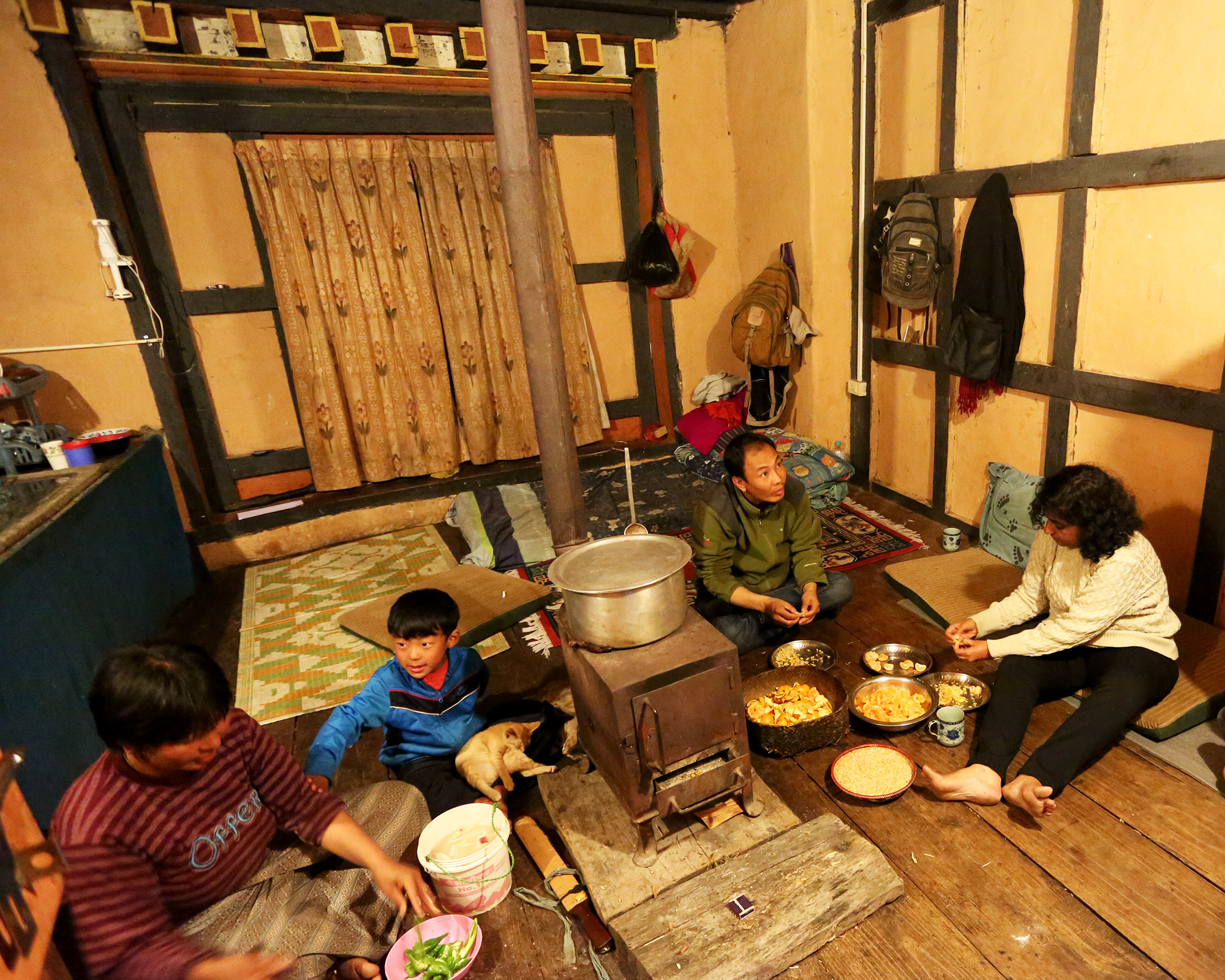
In 2005, when electricity first came to the village, the cooking medium was soon electric or gas-based, and the kitchen returned to the main house. The external firewood kitchen remained in many homes as an alternative. Ugyen’s mother had never been a fan of the toilet or the external kitchen, superstitions about spirits leading her to ascribe her failing health to the structure. The kitchen and toilet additions were therefore demolished. The kitchen was part of the home once more, and the toilet had its own place on a deck. The new kitchen now had a bukhariA bukhāri (Hindustani: बुख़ारी or بُخاری) is a traditional space heater from the northern areas of the Indian subcontinent, which is typically a wood-burning stove. Bukharis consist of a wide cylindrical fire-chamber at the base in which wood, charcoal or other fuel is burned and a narrower cylinder on the top that helps in heating the room and acts as a chimney. The base of an Indian bukhari is wider than that of most… in the centre where familysujaSuja or Butter tea is a staple drink of the people in the Himalayan countries such as Nepal, India (in particular Sikkim and Ladakh), Tibet and Bhutan. Read More. friends gathered to chat over suja and food during the winter. In summer, they gathered in the front room to eat and enjoy the evening air, no longer having a deck outside.
The attic in the typical home also underwent several transformations before settling into the role it now occupies. It was once used as a space to dry meat and vegetables and store grain, historically to protect produce from attacks by other tribes, and geographically when the terrain was too steep for drying. The wooden shingles have gradually given way to metal sheets which are much easier to maintain. With family sizes shrinking as people moved away, the area required for drying grew less – the attic has been converted into an additional sleeping space in most homeschoshamChösham: Domestic Shrine Rooms Chösham (མཆོད་བཤམ་) generally refers to the shrine room in a Bhutanese household, and more specifically, to the shrine built to house the holy objects. It is a space dedicated to the divine beings and objects of worship known as the tensum (རྟེན་གསུམ་), or three supports or body, speech, and mind. https://texts.shanti.virginia.edu/book_pubreader/40661…yen’ s house, the chosham or altar was also shifted upstairs for the quieter and more meditative surroundings. It remained here until fears of ill luck returned it to its original position.

The house has not changed much since. In the years before his passing, Ugyen’s father enjoyed his time looking out the window watching the seasons go by. He spent his days with an eye on the farm below, shouting instructions to one and all and listening to his much prized radio. Ugyen’s sister and adult children live in the house now, tending to the farm. Ugyen’s nephew, who trained to be an engineer, did not find meaning in, or the ability to fit into, the new world – he is content to work in the fields and care for the two cows that remain.
Life on the farm is strenuous and unforgiving, with little time for leisure. The family plants and harvests two crops a year, rice and buckwheat. Irrigation is from a mountain stream above. Apart from a television and a mobile phone that expand the boundaries of this world, it is still a fairly insular one. Ugyen is concerned that this kind of life cannot sustain his family for much longer.
Vignettes
